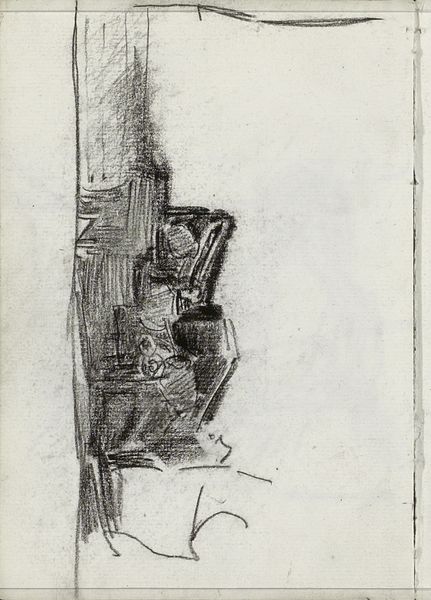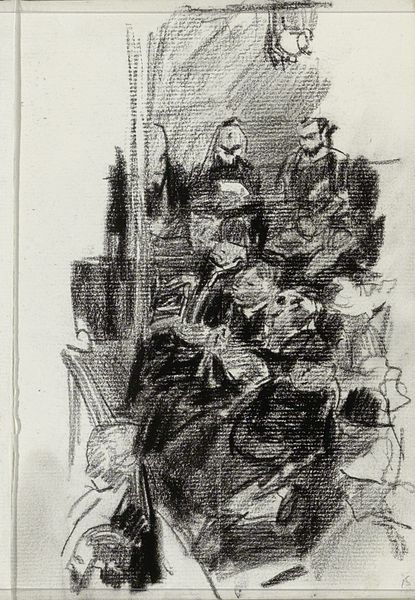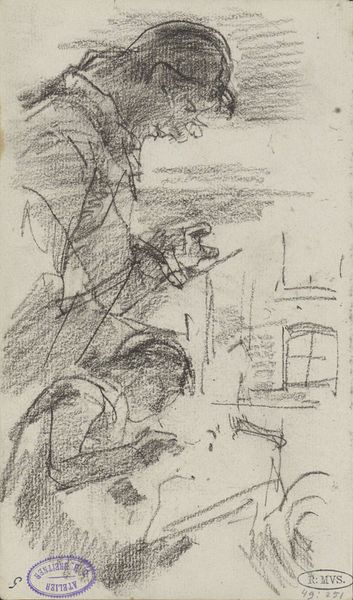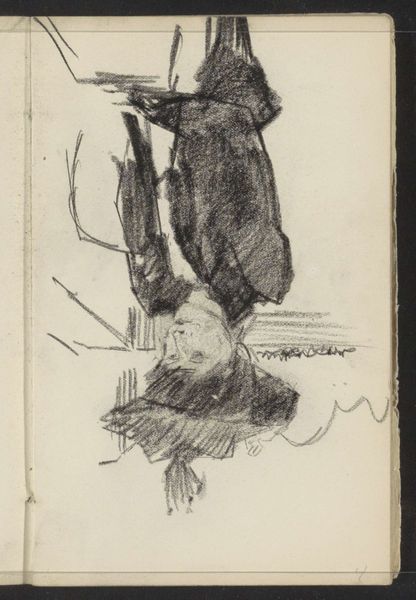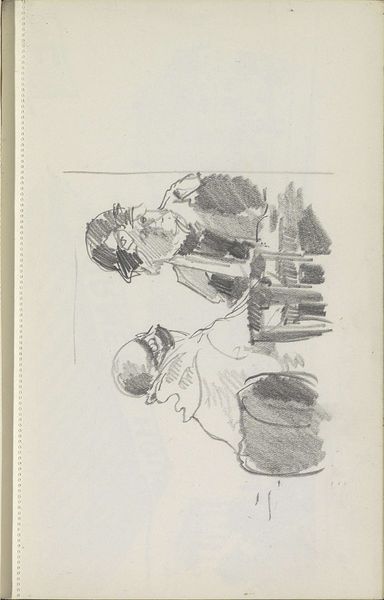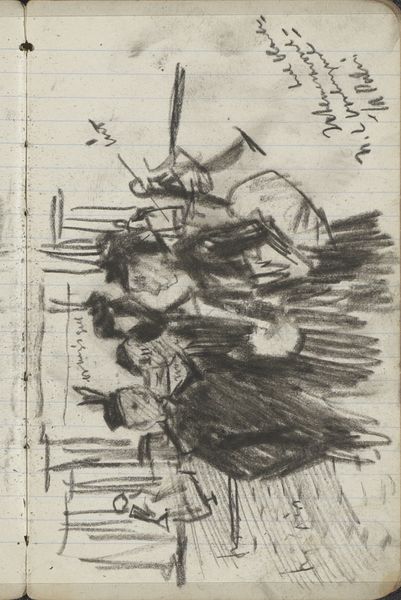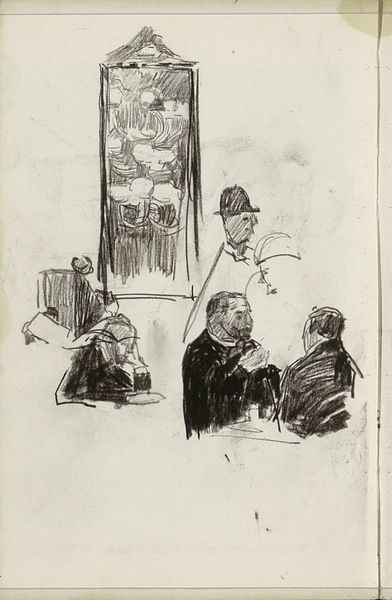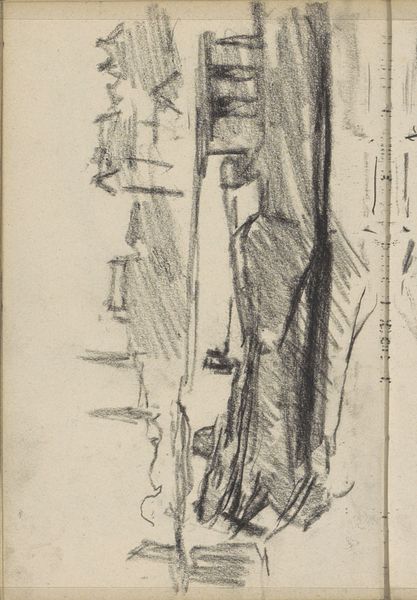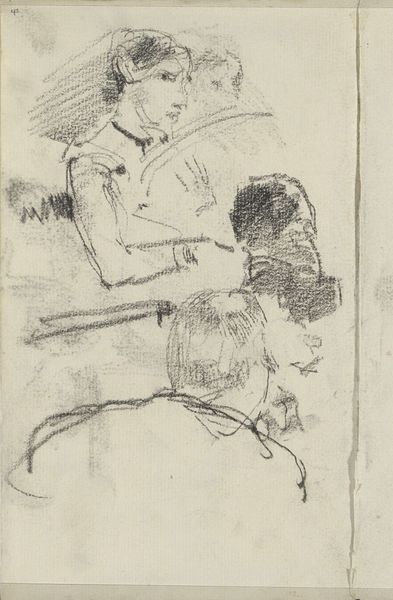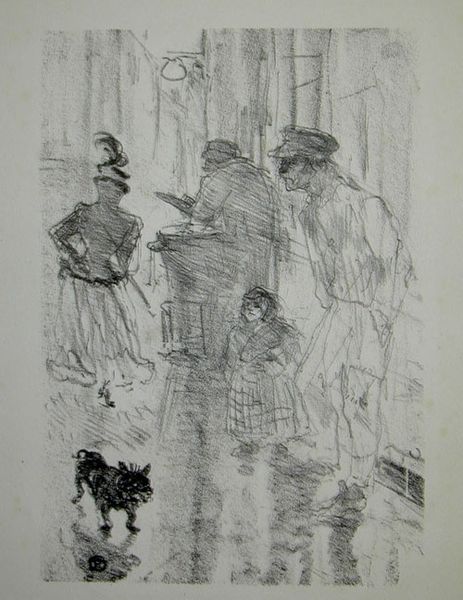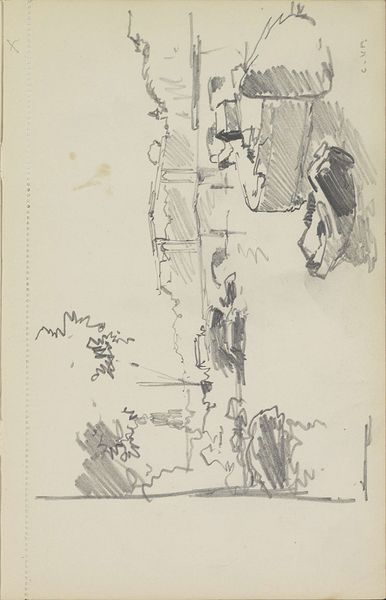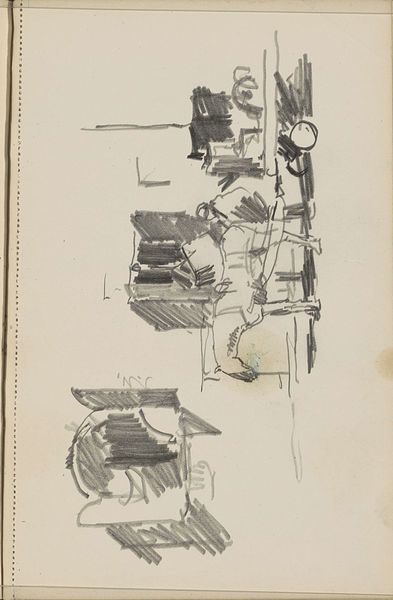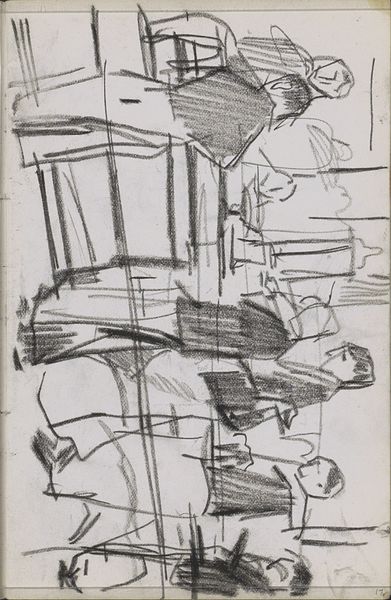
Copyright: Rijks Museum: Open Domain
Curator: Ah, yes. This sketch is called "Men and Women at Tables, possibly at a Concert" by Isaac Israels. It's difficult to give it a precise date, but we place it sometime between 1875 and 1934. Editor: My initial impression is one of chaotic energy, a sort of frantic dance rendered in graphite. The composition seems to reject any clear focal point, pushing my eye every which way. Curator: That chaotic energy is precisely what Israels sought to capture! He was deeply interested in depicting modern life, especially the vibrant social scenes of his time. The sketch embodies the atmosphere of a bustling café or concert hall, a snapshot of fleeting moments. Editor: There's a definite tension between the deep, smudged blacks and the quick, ephemeral lines. Those lines, like scribbles, give an incomplete picture of people, and create shapes. Curator: Exactly. Israels was part of the Dutch Impressionist movement. His loose technique reflects their interest in conveying the sensation of a moment rather than photographic realism. Notice how the figures seem to merge into the background. The graphite mimics the fleeting nature of memory and perception. Editor: The use of graphite here isn't just representational; it almost *becomes* the atmosphere. The medium isn't subservient to the subject matter; it actively participates in building this sensory impression. The varying pressure creates such drama and invites tactile engagement. Curator: I agree completely. This sketch shows how Israels captures everyday scenes from popular society and conveys that imagery in quick strokes, emphasizing observation of contemporary life rather than strict representation. He documented a shifting cultural landscape. Editor: Looking closer, I appreciate how the sketch suggests forms without fully defining them. That table at the lower part of the composition isn't literally *there*, but our minds supply the missing pieces, thus giving volume and rhythm to the ensemble. Curator: And his choice of subject speaks to an interesting democratization of art at the time, elevating commonplace scenes to a position of artistic value. Editor: Ultimately, for me, the piece reflects how effective simplicity can be in expressing a complex, bustling scene through these raw marks, pressure changes and rhythmic structure. Curator: I think you’re spot on, and observing it today gives us insight into cultural shifts from over a century ago and continues to influence artistic narratives today.
Comments
No comments
Be the first to comment and join the conversation on the ultimate creative platform.
